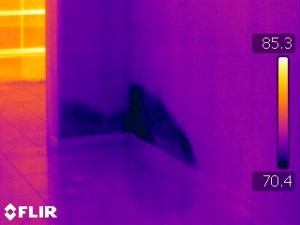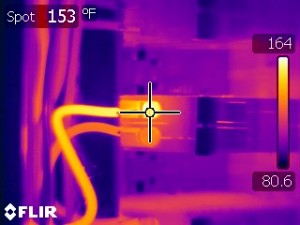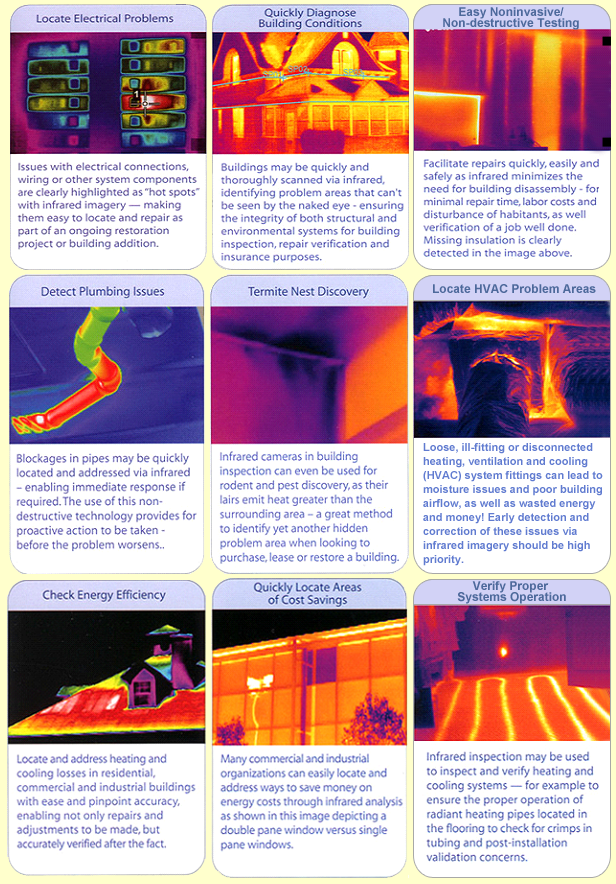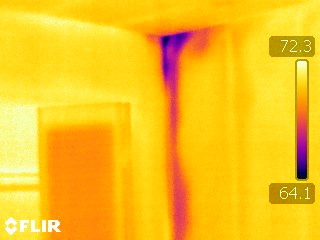The thermal imaging cameras used today are based on technology that was originally developed for the military. Infrared technology provides the ability to see and target opposing forces through the dark of night or across a smoke-covered battlefield. The properties that have made infrared detection valuable to military forces around the world have also made it valuable to firefighters and law enforcement. Infrared technology also has many useful building science applications that can help uncover problems not visible with the eye alone. Having your apartment complex inspected prior to purchase is a critical part of your due diligence process. Combined with traditional inspection techniques, using infrared during your multifamily inspection can reveal substantially more about the property than can be perceived by the naked eye and conventional inspection tools. Many things can’t be seen with only a flashlight. Here are some examples of problems infrared can detect during building inspections.
Examples of Infrared Inspection Applications
Water intrusion: Scanning interior surfaces of the home with an infrared camera can reveal excess moisture due to plumbing leaks, roof leaks, leaks around windows and the through the building envelope, etc. Wet building materials cool when energy is transferred during the water evaporation process; therefore, a wet (“cooler”) area will stand out from the surrounding dry (“warmer”) surface. This is especially helpful with multifamily inspections with two or more floors. It’s not uncommon to find water intruding from one unit to another. This can be caused by plumbing leaks – Like toilets and leaking shower-pans.

Shower-pan Leak
Insulation deficiencies: Appreciable temperature differences, due to variations in thermal energy (heat) transfer, allow for detection of deficient or missing insulation when scanning ceiling and wall surfaces.
Roofing leaks: Scanning roof coverings can reveal water intrusion and accumulated moisture below the surface. Due to its thermal properties (high thermal capacity), water typically gives up heat at a much slower rate than the surrounding roof materials. The areas of accumulated moisture can therefore be detected when scanning the roof surface. This type of roof inspection is best done in the evening or early nighttime after thermal energy imparted during the daytime is transferred or released.
Electrical systems: Deficiencies within the electrical system can be made visually apparent by use of an infrared camera. For example, a deficient connection between electrical components can result in resistance which will manifest in an apparent temperature elevation when compared with similar types of connections under similar load conditions.

Electrical Hot-spot
Structural issues: Differences in thermal capacity, conductivity, and other intrinsic qualities of building structural components can allow for their detection when scanning walls, floors, and ceilings with an infrared camera. Under the right conditions, missing structural components, and portions of structural components which are damaged (to the extent that their intrinsic qualities are significantly changed), can be detected.
Other Examples of Infrared Applications

NOTE: Although infrared thermal imaging is a far better diagnostic tool than the naked eye, it does not guarantee 100% accuracy, unless removal or destruction of components can be achieved.
When choosing an inspector for your new home, choosing one with that uses infrared technology will give you an advantage over traditional inspection techniques.
Priority Inspections, provides inspections through-out Brevard County. If we can be of help, contact us any time 321-368-9921


